Thank God for Anil. For twelve days, he heroically drove us through Rajasthan, one of India’s most visited states. His calm, even-keeled, and gentle personality boded well with the clueless drivers and maniacal bikers that cram India’s fractured roadways. If our roles had been reversed, hundreds of curse words would have filled the car everyday. At times frustrating, and other times comical, driving through Rajasthan was a tiring and eventful experience.
One word can easily sum up what driving is like in India: insane. This country has by far some of the craziest (and worst) drivers and motorcyclists that I have ever seen. Factor in that there are no rules to the road, and I give immediate respect to any foreigner who has or plans to self drive India. I’ve experienced driving – in the driver’s seat and in the back seat – in many countries, but there’s nothing like India. I thought Central and South America were dicey (last October in Buenos Aires, our cab driver actually flipped a pedestrian up onto his windshield), until I came here. With limited time to travel India, we opted to forego the country’s train and bus system and hire a driver. At first, I was disappointed that I was not able to take public transportation. But, after I realized how much we would see of the major cities and countryside from the car, my opinion quickly changed. Below are a number of thoughts and pictures to best describe the insanity that is driving in India and what you’re bound to encounter along the way:
You might as well remove the rearview and both side mirrors and black out every window except for the front windshield. Indian drivers don’t seem to really need them anyway. Heck, at times, I’m left wondering if some windshields are covered up too. Everyone has the right of way, as long as they make the first move – that can mean anything from turning into oncoming traffic at speeds that would typically cause serious harm, to driving on the wrong side of the road.
Driving lanes? What does it matter? If there’s one lane, traffic-goers will make three out of it, two lanes turns to five, and three to seven. And the dotted white lines typically marked to separate lanes – well, to 75% of drivers, they prefer to keep their car exactly in the middle of it.
Passing lanes? Forget about ’em. You can pass whenever and wherever you’d like – in the opposite lane, on the side of the road, around a hairpin turn, even if an oncoming car is blocking your gateway to pass. Just be mindful of other common obstacles such as buses, tractors, motorbikes, camels, cows, goats, water buffaloes, and how could I forget, innocent people walking, that share the pavement (or dirt).
The people and animal watching is priceless. From trucks overflowing with passengers, to beautiful colors on the women’s clothing, animals blocking the way, and bikers weaving in and out of stalled traffic, there is always a reason to keep a look out. Massive traffic jams can occur at random (you would assume it’s caused by construction or a serious accident), but a lot of times it’s due to animal crossing or from a truck that just decided to stop in the middle of the road.
Taking to the road in Rajasthan was a fantastic experience, I’m just glad I wasn’t the one driving.





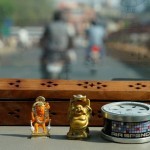
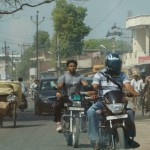
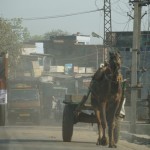
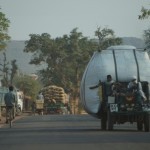
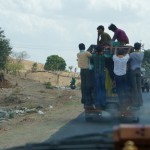
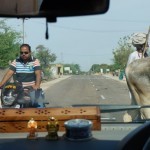

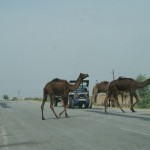
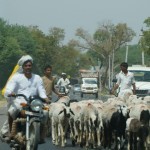



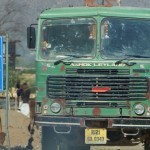
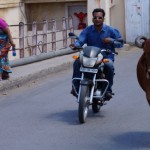

Pally you always make friends with your drivers! Good pics, love the stories.
What a perfect (not quite) mix of the “old way” mixing with “newer way”. I am sure you were both saying your prayers on those cluttered roads. Love you
Dear Mike and Kat, Your blogs are great, photos, too. So descriptive. Book Deal?? I have to admit after seeing “Slum Dog Millionaire” and “The Best Marigold Hotel” I was worried about your safety in India. Will keep praying. Love, Gram
MONKEY ON THE CAR…that’s India baby!! hope you guys are having a blast and staying cool.
Had to pay the toll. . .a group of them wouldn’t let us pass until we gave them food.